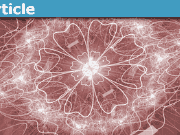Learn About Vacuum Fluctuations in Experimental Practice
This Insight Article is a sequel of the Insight Articles ”The Physics of Virtual Particles”, “Misconceptions about Virtual Particles“ , and ”The Vacuum Fluctuation Myth”, which make precise what a virtual particle is, what being real means, document some of the liberties taken in physics textbooks in the use of this concept, mention the most prominent misuses, and document the origin of some of the associated myths. In short, the concept of virtual particles is well-defined and useful when restricted to its use in Feynman diagrams and associated technical discussions. But it is highly misleading when used to argue about vacuum fluctuations as if these were processes happening in space and time. The latter is a frequent misunderstanding, a myth that has not the slightest basis in particle physics.
However, one meets occasionally mythical claims even in the scientific literature. Therefore it pays to look at a representative recent paper in which vacuum fluctuations play a seemingly prominent role, and answer the question: How do vacuum fluctuations look in practice?
http://science.sciencemag.org/content/350/6259/420 is the official web page for accessing a paper from Science by Riek and collaborators called ”Direct sampling of electric-field vacuum fluctuations” (Science 23 Oct 2015: Vol. 350, Issue 6259, pp. 420-423). A total of nine (9!) scientists take credit for having achieved that, so their jointly presented evidence should have some weight.
The journal web page, where Science readers are introduced to the paper, tries to generate publicity for the paper by placing the vacuum fluctuation myth in front of the main text:
According to quantum mechanics, a vacuum is not empty space. A consequence of the uncertainly principle is that particles or energy can come into existence for a fleeting moment.
Scientific publications in quantum optics typically use more careful language, and so do the authors of the paper, who write in the abstract something much milder:
The ground state of quantum systems is characterized by zero-point motion. This motion, in the form of vacuum fluctuations, is generally considered to be an elusive phenomenon that manifests itself only indirectly. Here, we report direct detection of the vacuum fluctuations of electromagnetic radiation in free space.
But still, it is an extraordinary claim that gives vacuum fluctuations the appearance of reality. Thus a closer look at their paper is called for.
Towards the end of their paper, they write:
In our study, we directly monitored vacuum fluctuations without amplifying them. The only effective part […] of the operator that extracts the variance of the field in Eq. 4 indicates that vacuum fluctuations correspond to photons, which spontaneously arise and vanish in the ground state. Time-energy uncertainty demands that virtual excitations have a limited lifetime on the order of their oscillation cycle (32). The subcycle temporal resolution provided by the ultrashort probe ensures that we can directly detect effects originating from purely virtual photons.
The first two sentences are still phrased in cautious language, as the word ‘indicates’ hints at a tentative finding only. But then they assert the vacuum fluctuation myth about ”photons, which spontaneously arise and vanish in the ground state.” The reference [32] they give to justify this indication is only to another paper by one of the authors, not – as one should expect for such a revolutionary result claimed – a basic reference where one could see a detailed derivation of how these photons arise spontaneously. Indeed, there are no such references since spontaneous processes happen only in unstable objects, but the vacuum is completely stable. And in the final sentence, they forgot their moderation: they announce – without giving any further argument – their surprising claim ”that we can directly detect effects originating from purely virtual photons”. The justification is completely lacking…
But let us look at their experimental findings. On closer reading of the paper, one finds that what fluctuates in the experiment is the electro-optical signal detected, not the vacuum. The electro-optical signal is the only thing measured, and it exhibits fluctuations. Thus what is measured are fluctuations of the signal, not of the vacuum.
So let us look at the evidence provided for their claim. The vacuum (whose fluctuations were allegedly observed) appears only indirectly – in spite of the title of the paper and the advertisement in the abstract -, namely in the form of a theoretical contribution to the variance of this signal in eq. (7), denoted ##\Delta\bar E_{vac}^2##. This contribution, defined in eq. (4), is of the form ##\langle X\rangle##, where ##X## can be read off from eq. (4) to be a sum of squares of Fourier components of the electric field, with the ensemble expectation taken in the ground state of the radiation field. The latter is referred to as the vacuum.
A casual reader of Science – not being an expert in quantum optics – is likely to imagine that the vacuum is a region of space devoid of matter and radiation but, indoctrinated by popular stories, filled with quantum fluctuations. Unfortunately, it is not stated in this paper where this vacuum is located: The putative vacuum appears nowhere in the description of the experimental set-up. One concludes that it does not take part in the experiment, except figuratively. How is this possible?
What is called (not only in this paper but everywhere where quantum field theory is used) the vacuum is just a mathematical state used in the computations of quantum electrodynamics (QED) with which predictions about experimentally realizable situations are computed in perturbation theory. QED is our most successful quantum field theory. It is well-defined in perturbation theory (and at present only in this form) and leads in this form to some extraordinarily precise (10 digits) predictions, higher in relative accuracy than any other physical theory we know. It is manifestly Poincare invariant (hence valid relativistically) and gauge invariant. It is the theory that played the role model for the construction of other quantum field theories for microscopic systems, such as quantum chromodynamics (QCD). The latter is quantitatively far less well developed since its forces are far stronger, so that perturbation theory gives poor results. Compared to QED, QCD has the advantage that it is asymptotically free at large energies, with the consequence that – unlike QED – it can be studied in a lattice approximation, with enormous numerical effort ultimately rewarded by reasonable (few digits) accuracies.
QED, on the other hand, has the advantage that, because the fine structure constant is tiny at all experimentally accessible distances and energies, renormalized perturbation theory already produces very useful results at the lowest order (1 loop), with closed, Poincare invariant formulas whose use needs hardly any numerical effort. The way perturbation theory works is by relating the interacting theory, i.e., the physical QED, to a mathematically well-defined but physical fiction in which electrons have physical charge zero (the so-called ”free QED”). Then everything that can be compared with the experiment is expressed in terms of power series in the true electron charge ##e##, with coefficients deduced by perturbation theory and expectation values of the vacuum state in this fictitious theory. The mathematically cleanest way to do this – fully Poincare invariant and completely avoiding both the infamous infinities in naive perturbation theory and the need for an energy cutoff that must be moved to infinity after all these infinities have been canceled – is causal perturbation theory. It reproduces exactly the formulas derived earlier by mathematically more questionable methods that earned Feynman, Tomonaga, and Schwinger the 1965 Nobel prize ”for their fundamental work in quantum electrodynamics, with deep-plowing consequences for the physics of elementary particles”.
From the causal perturbation theoretic treatment, it is clear and mathematically indisputable that everything experimentally measurable about photons, electrons, and positrons (and with appropriate extensions, also everything else) is expressible in terms of vacuum expectation values. Therefore explaining something as a consequence of hypothetical vacuum fluctuations because certain vacuum expectations occur in the quantum mechanical formula used for its calculation explains nothing, since vacuum expectations occur in all quantum field calculations, as long as they are done in a perturbation theoretic setting. In nonperturbative lattice field-theory studies, one cannot find the slightest trace of vacuum fluctuations since the vacuum plays no role at all in the calculations.
”Explanations” by vacuum fluctuations, therefore, have great similarity with (and as little weight as) the absurd claim that all motion is caused by elementary arithmetic since additions, subtractions, multiplications, and divisions are always used in the solution of the differential equations describing the dynamics.
For those interested, let me also remark that although causal perturbation theory serves to dispel the myths surrounding virtual particles and vacuum fluctuations, causal perturbation theory is also the origin of a true ghost story.
Full Professor (Chair for Computational Mathematics) at the University of Vienna, Austria








how would you explain Delbrück scattering without invoking virtual particles?"Delbruck scattering derives from the interaction of photons with the field produced by the nucleus, which is not the exact Coulomb field that appears in classical physics, because of QED corrections, and therefore can produce effects that a classical Coulomb field would not produce."
The observable fact is that the field of something like an atomic nucleus is not an exact classical Coulomb field (or more generally an exact classical electromagnetic field). "Virtual particles" are just a name we give to one particular aspect of one particular theoretical model that helps us to predict that observable fact, as well as many other observable facts.
Here is a recent article.
https://physics.aps.org/synopsis-for/10.1103/PhysRevLett.118.204801
Scattering from the Quantum Vacuum
According to quantum theory, the vacuum swarms with particles that pop in and out of existence. […]Just because the reviewers from the (otherwise reputable) journal accepted for publication this article with an introduction/abstract full of inaccurate clichés, this does not mean the authors are right to use them.
Now, if virtual particles are just a mathematical tool, then how would you explain Delbrück scattering without invoking virtual particles?Virtual particles are a mathematical tool with which we can predict the outcomes of real experiments. There's no conflict whatsoever: nobody's asserting that it's wrong to use calculations with virtual particles, just that wordy descriptions like "the vacuum swarms with particles that pop in and out of existence" do not correspond to what is mathematically described by the theory (as has been convincingly argued in the original post), and are rather illegitimate heuristics that seem to spread for sociological reasons.
Delbrück scattering in particular is nothing special, and is related to things like vacuum birefringence, photon splitting, or the Schwinger effect. The basics of the calculation were already known in the 1930s due to Heisenberg and Euler, though some pieces of the puzzle required Schwinger's contribution circa 1950. In either case the words "virtual particles" were nowhere to be seen.
The electron propagator is modified in the presence of an external field and one-loop corrections lead to effects that don't happen in ordinary conditions. Nothing justifies interpreting these one-loop diagrams as a photon scattering off "particles that pop in and out of existence". It's better to interpret it as the photon having a weak response to external electromagnetic fields because of its interaction with charged fields.
Here is a recent article.
https://physics.aps.org/synopsis-for/10.1103/PhysRevLett.118.204801
Scattering from the Quantum Vacuum
According to quantum theory, the vacuum swarms with particles that pop in and out of existence. While they are virtual, these particles are at the root of observable quantum phenomena like the Casimir effect. James Koga and Takehito Hayakawa at the National Institutes for Quantum and Radiological Science and Technology, Japan, have now detailed a way to measure with unprecedented accuracy a difficult-to-isolate quantum-vacuum effect known as Delbrück scattering. The approach may allow sensitive tests of the theory of quantum electrodynamics (QED).
Delbrück scattering has analogies with the better-known form of scattering responsible for the color of the sky—Rayleigh scattering. Rayleigh scattering arises from the interaction of photons with bound electric charges in the scattering particles. Delbrück scattering instead derives from the interaction of photons with virtual electron-positron pairs in the presence of the Coulomb field of an atomic nucleus. First observed in the 1970s, the effect remains hard to characterize because it occurs in combination with four other types of scattering, including Rayleigh.
Koga and Hayakawa propose a method to isolate and measure Delbrück scattering. The key to their solution is the use of polarized gamma rays. According to their calculations, an appropriate choice of scattering angle, photon polarization, and photon energy would make Delbrück scattering 2 orders of magnitude stronger than that of the other three forms of scattering. Assuming the use of tin as the scattering material and a high-flux gamma-ray source like ELI-NP (Extreme Light Infrastructure – Nuclear Physics)—a facility under construction in Romania—the team predicts that, using data collected over 76 days, the method could double the accuracy achieved in previous experiments.
Now, at one point it says, "Delbrück scattering instead derives from the interaction of photons with virtual electron-positron pairs in the presence of the Coulomb field of an atomic nucleus." Now, if virtual particles are just a mathematical tool, then how would you explain Delbrück scattering without invoking virtual particles?
sir when we say light is photon and it has certain frequency then how can we visualize the vibration, cycles of photonThe photon is the vibration! Visualization is by a sine wave.
A. Neumaier submitted a new PF Insights post
Vacuum Fluctuations in Experimental Practice
Continue reading the Original PF Insights Post.sir when we say light is photon and it has certain frequency then how can we visualize the vibration, cycles of photon
There is no discussion in physics, (and even math!) no matter how advanced, you do not use ordinary languageYou might be using words like "energy", "work", "force", etc., but those words do not refer to ordinary language concepts. They refer to particular parts of the math.
mathematics, I think, is just a languageBut not the same kind of language as ordinary language, because mathematical terms have precise referents.
The photomultiplier detects only the intensity of the currentThe intensity of the current is the output of the photomultiplier, not the input. "Photon" is the name we give to whatever-it-is that goes into the photomultiplier and causes the current to be output.
Yes. We have detectors that can detect single photons (they're called photomultipliers).not entirely true. The photomultiplier detects only the intensity of the current … where is the "photon"?
:to really understand physics, you have to use math, not ordinary language.ok, then teach me the first law of Newton, or any other physical argument, without using a single word of "ordinary language", ie using only the language of mathematics. There is no discussion in physics, (and even math!) no matter how advanced, you do not use ordinary language, because, after all, mathematics, I think, is just a language
does not convince meSo just take QFT textbook and learn it properly by yourself. Then you'll see what everyone here is talking about, because:
to really understand physics, you have to use math, not ordinary language.
Has anyone ever seen a "photon"? or a "quark"?Yes. We have detectors that can detect single photons (they're called photomultipliers). We ran experiments called deep inelastic scattering experiments in the 1960s where we shot high energy electrons into nuclei and watched them bounce off quarks; that's how the quark model was developed.
But now ask the question: are photons and quarks "particles"? I would answer no: "particle" is just a mathematical tool we use to construct our models. Photons and quarks are photons and quarks. They are not little billiard balls or pointlike masses. But there are real things there that we see in experiments like the ones I mentioned above, and "photon" and "quark" are the names we give to those real things.
So if you want to say that "virtual particles" are the name you will give to "whatever real thing it is that explains the Casimir effect, Hawking radiation, Lamb shift, etc.", sure, you can do that. But then you are using the term "virtual particles" to describe something that isn't a particle any more than photons or quarks are particles. The term "vacuum fluctuations" is really no better in that regard, because it invites the inference that whatever it is is fluctuating, like a wave–but it isn't a wave any more than it is a particle. It is something for which we have no intuitive analogy at all; it's not like anything we have an ordinary language word for.
This is a major reason why many (like myself) keep emphasizing that to really understand physics, you have to use math, not ordinary language. There is no dispute about the math: we know how to construct mathematical models that make accurate predictions about all of the experiments I referred to above. The only disputes are about which ordinary language words are the "right" ones to use to refer to the physics; but that dispute is ultimately pointless because no ordinary language words are "right".
And all of them treat virtual particles as a mathematical tool, not physical 'reality' (whatever that means). And that is the whole point A. Neumaier is bringing up.does not convince me. So whatever it is nothing more than a mathematical tool. Even quarks have no physical reality, are only mathematical tricks, but then whatever. Even the light, we have only the equations of Maxwell there is no other reality than the Maxwell equations. Has anyone ever seen a "photon"? or a "quark"? What is the reality of a photon? Only mathematical tool…
but there are many other, very technical, and not simply informative, for example on the vacuum polarization, or the effect Lamb-shift etc.And all of them treat virtual particles as a mathematical tool, not physical 'reality' (whatever that means). And that is the whole point A. Neumaier is bringing up.
From Hawking about that picture:It should be emphasized that these pictures of the mechanism responsible for the thermal emission and area decrease are heuristic only and should not be taken too literally.You can make up those things to describe something in English, but the actual calculations don't have any virtual particles or vacuum fluctuations.
Same for vacuum polarization, Casimir effect, Lamb shift and everything else. Sometimes virtual particles are a nice (but not necessary) tool in calculations, but that is different from vacuum fluctuations.
This article for example:
Particle Creation by Black Holes
Department of Applied Mathematics and Theoretical Physics, University of Cambridge, Cambridge, England Received April 12, 1975
https://www.brainmaster.com/software/pubs/physics/Hawking Particle Creation.pdf
At page 202 :
Just outside the event horizon there will be virtual pairs of particles, one with negative
energy and one with positive energy
but there are many other, very technical, and not simply informative, for example on the vacuum polarization, or the effect Lamb-shift etc.
In addition, other authors, such as Feynman and Hawking argue explicitly a state of vacuum in which particles and anti-particles "virtual" is created and destroyed.Can you show any textbook/peer reviewed article on QFT where they say that?
A. Neumaier submitted a new PF Insights post
Vacuum Fluctuations in Experimental Practice
Continue reading the Original PF Insights Post.I did not understand exactly, I'm sorry, but the topic is very interesting. For all I knew, the Casimir experiment would prove the existence of "a quantum vacuum." In addition, other authors, such as Feynman and Hawking argue explicitly a state of vacuum in which particles and anti-particles "virtual" is created and destroyed. In the second quantization are introduced proper operators of "creation" and "destruction. "
Now the article casts doubt this description? How are and things?
Thank you very much
Since vacuum fluctuations are not existing (at least not accoring to standard relativistic QFT), you cannot even define an experiment to measure them. For the conception of measurements you need at least some model!
Sir, you write:
"what fluctuates in the experiment is the electro-optical signal detected, not the vacuum."
Sir, by what experimental/observational means can we discern that the fluctuations are not part of the Vacuum?
It's one thing to say that "vacuum fluctuations" are an unsupported assertion, but it's another thing to be able tor rule them out, particularly by experimental means. How can this "unsupported assertion" be ruled out, experimentally?I don't think that this question has been answered fully.
Can you give us an example of an experiment(thought experiment) as YOU would imagine it, such that it would provide sufficient proof for vacuum fluctuations being "real" and being "directly" detected according to your standards? (You are allowed to use futuristic devices which do not exist yet, but may in the future)
edit: In particular. What kind of experiment would you propose/imagine for -> "…one would have to give theoretical evidence that the signal fluctuates in the same way as the vacuum. "
As far as i am concerned, real and direct is quite a mouth full. Special relativity for example is a nice and elegant theory which is capable of predicting some of our experiences of the world quite accurately as long as there is no gravity involved.
In the end however, it is just a method to predict experiences. There are other theories/methodologies which have the equivalent predictive power to SR. We simply cannot know if spacetime out there is as we imagine it to be. Nor can we know _directly_ if particles or fields are "real" as we imagine them to be.
All we CAN know is that by following the methodologies of the according/more successful theories, we can predict our experiences more accurately than following less successful theories.
So to me, the question on if virtual particles are real or can be directly observed is nonsensical. What matters to me is, if the theory which is based on virtual particles and their fluctuations is capable of predicting what i will experience in the future more accurately or equally accurate as other competing theories.
Again, I will re-iterate my position:
It seems to me that the author is saying "A totally empty vacuum has no quantum fluctuations, but when you introduce real particles(or non-zero expectation values), it behaves as if there are quantum fluctuations." Lamb shift, vacuum polarization, Unruh effect, Hawking radiation, etc. The ψ at each point in space has an uncertain H for each field.
So, when no observer is present to observe nothing(the only true vacuum state), nothing happens.
[QUOTE="Daniel Kellis, post: 5696664, member: 616456"]Hawking radiation relies on Maxwell's demon to ensure that the negative energy virtual particle always goes into the black hole and the positive energy virtual particle always escapes.[/QUOTE]We have another live thread on this misconception right now: https://www.physicsforums.com/threads/how-does-hawking-radiation-work.904630/The links in the first two replies are worth reading.
The derivation of Hawking radiation does not use virtual particles at all. That is just a pop-science description that leads to misconceptions.
I think virtual particles are OK in diagrams if they help solve the problem. But it is not OK to let virtual particles break the fourth wall, as is done with Hawking radiation. One virtual particle has positive energy and the other has negative energy. Hawking radiation relies on Maxwell's demon to ensure that the negative energy virtual particle always goes into the black hole and the positive energy virtual particle always escapes.
Moderator's note: some off topic posts and responses have been deleted.
[QUOTE="sanman, post: 5673892, member: 65959"]I was simply referring to the Quantum Vacuum as being an explanation in its own right.[/QUOTE]Which it isn't.[QUOTE="sanman, post: 5673892, member: 65959"]you haven't shown me an EXPERIMENTAL way to separate the Scalar Field from spacetime[/QUOTE]That's obvious too: there are different observables corresponding to measurements of the scalar field vs. measurements of spacetime (which really means measurements of times and distances).[QUOTE="sanman, post: 5673892, member: 65959"]There has not been any proof through real world experimental measurement that rules out the existence of the Quantum Vacuum particles[/QUOTE]"Quantum vacuum particles" are just one interpretation of various measurement results. There are other interpretations, but they all predict the same measurement results. In order for "quantum vacuum particles" to be more than just an interpretation, you would have to find some measurement result that was predicted to be different if "quantum vacuum particles" exist than if other interpretations are correct. If you can find an acceptable reference to such a prediction (which I strongly doubt you can), then post it. Otherwise your speculations are off topic.
[QUOTE="PeterDonis, post: 5673342, member: 197831"]The impossibility of a piece of matter dropping to below zero Kelvin (or even reaching zero Kelvin) is not a quantum phenomenon. It's already present in classical thermodynamics.You might be confusing this phenomenon with the quantum phenomenon that an object at zero Kelvin (which is an idealization not realizable in practice) does not (necessarily) have zero energy.[/quote]Sir, I was not attempting to justify which is the most rightful explanation for why things can't go to absolute zero (or below it), I was simply referring to the Quantum Vacuum as being an explanation in its own right.[quote]Have you actually looked at the math? It's obvious there.[/QUOTE]Please then let me amend my statement:"you haven't shown me an EXPERIMENTAL way to separate the Scalar Field from spacetime"Since we were talking about measurement, and measurement is usually done through experimental observation, I assumed it was apparent that I was speaking in the context of real-world method of measurement.The original argument here was that "Quantum Vacuum particles do not exist, they are merely mathematical constructs and are not real. Mathematical description is not enough to make something real. It is the Scalar Field which is real, not the hypothetical Quantum Vacuum particles."And yet when I ask why the electromagnetic Scalar Field should be seen as separate from spacetime, then you are giving me the reply that"Come on – it's all about the Math!"I feel like we are arguing like Abbott and Costello in "Who's On First?"I am not trying to be argumentative, but I feel that the Quantum Vacuum particles interpretation as just as legitimate as the belief in the electromagnetic Scalar Field. There has not been any proof through real world experimental measurement that rules out the existence of the Quantum Vacuum particles. That was what I was taking issue with.
[QUOTE="sanman, post: 5673241, member: 65959"]Quantum Vacuum Theory[/QUOTE]There is no quantum vacuum theory. Please learn the subject properly before claiming assertions about the subject matter.
[QUOTE="sanman, post: 5673241, member: 65959"]can I say that "it is the fluctuations modeled by the Quantum Vacuum Theory which prevent a body of matter from dropping to a temperature below Zero Kelvin"?[/QUOTE]The impossibility of a piece of matter dropping to below zero Kelvin (or even reaching zero Kelvin) is not a quantum phenomenon. It's already present in classical thermodynamics.You might be confusing this phenomenon with the quantum phenomenon that an object at zero Kelvin (which is an idealization not realizable in practice) does not (necessarily) have zero energy.[QUOTE="sanman, post: 5673241, member: 65959"]you haven't shown me a way to separate the Scalar Field from spacetime[/QUOTE]Have you actually looked at the math? It's obvious there.
[QUOTE="A. Neumaier, post: 5672963, member: 293806"]This is not the way physicists speak about the vacuum. Maybe you should make yourself more acquainted with real science.[/QUOTE]Alright, can I say that "it is the fluctuations modeled by the Quantum Vacuum Theory which prevent a body of matter from dropping to a temperature below Zero Kelvin"? (ie. even if you don't like the Quantum Vacuum model, surely you accept the existence of the fluctuations which are describable by other models of your preference)Even if you prefer the Scalar Field as the basis for fluctuations, you haven't shown me a way to separate the Scalar Field from spacetime. Therefore, if an electro-optical signal is being measured in the Scalar Field, and that field is indistinguishable/inseparable from spacetime, then any attributes it has can be attributed to spacetime itself just as easily. How can we know better, if we can't tell them apart, or observe them apart from one another?
I've been reading up on QFT itself and I am beginning to see where Neumaiur is coming from. Still not sure I have everything straight though. Actually positive that I don't lol, the majority of the math itself isn't the issue though. I'm currently on the Ultraviolet cutoffs and the imaginary i. Though I still need to work on the LSZ reduction formula. Point being is from what I've gotten so far I can see the validity behind this article
[QUOTE="sanman, post: 5672956, member: 65959"]I was speaking of the Quantum Vacuum, which exists even when matter is present, and it even affects that matter. For instance, it is the Quantum Vacuum which prevents matter from dropping below Zero Kelvin[/QUOTE]This is not the way physicists speak about the vacuum. Maybe you should make yourself more acquainted with real science.
[QUOTE="A. Neumaier, post: 5672787, member: 293806"]No. Space-time is a vacuum only in a very specific state. If the two were the same we wouldn't have two different words for them.[/QUOTE]Just for clarity, which specific state are we talking about? You mean the "evacuated" state? I was speaking of the Quantum Vacuum, which exists even when matter is present, and it even affects that matter. For instance, it is the Quantum Vacuum which prevents matter from dropping below Zero Kelvin, because its fluctuations put back into the matter a basic minimum amount of energy.So my point is that whether you measure your electro-optical signal in the presence of matter or without its presence, the Quantum Vacuum and its fluctuations are still being felt, and are still influencing the measured results.
[QUOTE="mfb, post: 5672870, member: 405866"]Nice article!Sometimes we would be happy to have a 10% accuracy…[/QUOTE]I know. I was thinking of optimistic figures (low lying baryon spectrum to ##1-9##%), and deliberately used the vague expression ''few''.As you probably know (I write this for @atyy who thinks no continuum limit is needed), a lot needs to be done to get values that can be compared with experiment, not just calculations on a fixed lattice. From the paper just cited:[QUOTE="Fodor and Hoelbling"]p.29: What one would ideally like to do then is to fix the N_f + 1 dimensionless bare parameters of the lattice theory, the bare quark masses and the gauge coupling, such that the N_f dimensionless observables on the lattice assume their physical values exactly and the lattice spacing a is of the desired size. One could then measure any observable on the lattice for a range of lattice spacings a and, with the appropriate functional form that is given by the discretization effects of the specific action used, extrapolate them into the continuum a = 0. […]p.31: The removal of the cutoff, also known as continuum extrapolation, is an unavoidable part of any lattice calculation that wants to make a statement about the underlying fundamental continuum theory. The severity of the continuum extrapolation however depends very strongly on both the action used and the combination of scale setting observable and measured observable. […]p.46: While ground state non-singlet hadron masses can be computed to a few percent accuracy today, reaching the same level of precision for excited states or singlet hadrons is still a challenging task.[/QUOTE]The final results for the baryon masses in the infinite volume limit, together with their error margins, are given in Table 1 on p.38.
Nice article![quote]Compared to QED, QCD has the advantage that it is asymptotically free at large energies, with the consequence that – unlike QED – it can be studied in a lattice approximation, with enormous numerical effort ultimately rewarded by reasonable (few digit) accuracy.[/quote]Sometimes we would be happy to have a 10% accuracy…
[QUOTE="sanman, post: 5672325, member: 65959"]The Vacuum has included itself because it is omnipresent – it is spacetime.[/QUOTE]No. Space-time is a vacuum only in a very specific state. If the two were the same we wouldn't have two different words for them.
[QUOTE="A. Neumaier, post: 5671995, member: 293806"]In the presence of which vacuum? The vacuum is not part of the experimental set-up![/QUOTE]Sir, we are not given a choice on whether or not to include the Vacuum in our experimental setup. The Vacuum has included itself because it is omnipresent – it is spacetime.
[QUOTE="sanman, post: 5671579, member: 65959"]in the presence of the vacuum[/QUOTE]In the presence of which vacuum? The vacuum is not part of the experimental set-up!
[QUOTE="A. Neumaier, post: 5671140, member: 293806"]Claims require proof, otherwise they can be ignored. That's the rule in science. Nothing is ruled out in science; the demarcation line between science and speculation is the proof, not the disproof.The electro-optical signal is the only thing measured, and it exhibits fluctuations. Thus they are fluctuations of the signal, not of the vacuum.To understand what this means consider fluctuations of a visual signal seen on an oscilloscope in an ordinary experiment, and someone claims that these are a visual proof of fluctuations of the vacuum. Nobody would take such a claim serious without a proof.To argue that fluctuations of the vacuum are measured one would have to give theoretical evidence that the signal fluctuates in the same way as the vacuum. Lack of this evidence is enough to reveal the claim as pure speculation.[/QUOTE]"The electro-optical signal is the only thing measured"Sir, what is measured is "the electro-optical signal in the presence of the vacuum"We have 2 dance partners here, and if one of them is malodorous or having squeaky shoes, we won't be able to tell which one is the culprit as long as we are only seeing them together.If we could examine them individually apart from one another, then we might be able to tell which one is malodorous or having the squeaky shoes.There may not be a way to measure an electro-optical signal apart from the vacuum, since we cannot step outside of spacetime, but it may be useful to look at other phenomena in the vacuum (sans electro-optical signal) to see if any similar behavior can be observed.I do not see how you can assert that only the electro-optical signal is being measured, when that signal is occurring in the presence of the vacuum, and thus possibly interacting with the vacuum.
Thanks Arnold!
[QUOTE="sanman, post: 5670760, member: 65959"]It's one thing to say that "vacuum fluctuations" are an unsupported assertion, but it's another thing to be able tor rule them out, particularly by experimental means. How can this "unsupported assertion" be ruled out, experimentally?[/QUOTE]Claims require proof, otherwise they can be ignored. That's the rule in science. Nothing is ruled out in science; the demarcation line between science and speculation is the proof, not the disproof.The electro-optical signal is the only thing measured, and it exhibits fluctuations. Thus they are fluctuations of the signal, not of the vacuum. To understand what this means consider fluctuations of a visual signal seen on an oscilloscope in an ordinary experiment, and someone claims that these are a visual proof of fluctuations of the vacuum. Nobody would take such a claim serious without a proof.To argue that fluctuations of the vacuum are measured one would have to give theoretical evidence that the signal fluctuates in the same way as the vacuum. Lack of this evidence is enough to reveal the claim as pure speculation.
Sir, you write:"what fluctuates in the experiment is the electro-optical signal detected, not the vacuum."Sir, by what experimental/observational means can we discern that the fluctuations are not part of the Vacuum?It's one to say that "vacuum fluctuations" are an unsupported assertion, but it's another thing to be able tor rule them out, particularly by experimental means.